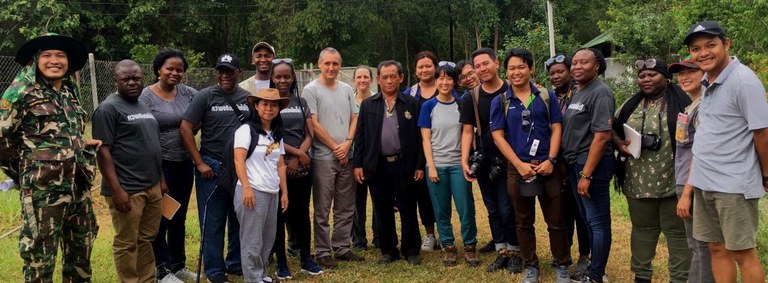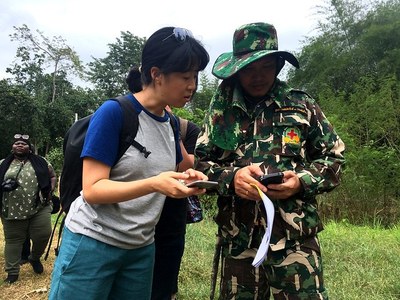Thai and Tanzanian Journalists Join Hands to Combat Wildlife Crime
BANGKOK, August 26, 2019 – This week in Thailand, journalists from Tanzania joined forces with their Thai counterparts to explore wildlife conservation and trafficking issues. The trip was part of a two-way exchange. In June, Thai journalists traveled to Tanzania to learn about wildlife trafficking from a source country perspective. The Thai side of the exchange focuses on issues related to the demand for illegal wildlife products.
This cross-continental partnership to combat wildlife crime is part of the Asia-Africa Journalists Exchange Program. The program is funded by the United States Agency for International Development (USAID) through USAID Wildlife Asia and USAID Promoting Tanzania’s Environment, Conservation, and Tourism Project (USAID PROTECT). Both projects work closely with journalists to improve their understanding of the importance of wildlife in their countries and regions.
The itineraries of the exchange included meetings with subject matter experts from national and international conservation organizations and government officials and opportunities to visit the field.
In Thailand, journalists visited one of the major amulet markets in Bangkok. They also visited the Bang Pra Water Bird Breeding Center in Chon Buri Province where confiscated exotic species are retained following seizures. A meeting with the Thai Customs Department at Suvarnabhumi International Airport educated journalists on how wildlife is illegally trafficked by air.
Highlights in Tanzania included visiting the Ngorongoro Conservation Area where journalists saw animals in the wild, spoke with rangers about the impacts of trafficking, and observed how communities are engaged in wildlife protection. On a field trip to Tanzania Wildlife Division's anti-poaching unit, journalists learned how the unit works to combat wildlife trafficking and the challenges they face in the field.
“Results from the Tanzania trip confirmed that providing opportunities for journalists to meet with technical experts and engage them in the field, as well as see wild animals such as rhinos and elephants impacted by the illegal wildlife trade, enhanced their understanding of the crisis. First-hand knowledge is essential in helping journalists better develop their stories,” said Bronwyn Llewellyn, lead for USAID conservation activities at U.S. Embassy in Tanzania.
The exchange provided the journalists an opportunity to take photos and video footage as well as interview a wide variety of experts to develop media stories. It also allowed them to discuss their roles in combating wildlife crime and share their experiences when covering counter wildlife trafficking stories, the challenges they face, and issues with media safety.
“The media play a very important role by raising awareness and focusing attention on the impacts of wildlife trafficking,” said Cristina Velez Srinivasan, Ecosystems Management & Trade Team Lead for USAID’s Regional Development Mission for Asia.
The long-term aim of the exchange is to provide a platform for journalists to develop a network of dedicated and committed individuals working together to report regularly and consistently on wildlife trafficking.
“It is our hope that exchange programs such as this encourage the media to increase the coverage of illegal wildlife crimes and that the stories produced spur the public to demand protection of wildlife,” Srinivasan said.
The exchange was organized by USAID Wildlife Asia, USAID PROTECT, Journalists’ Environmental Association of Tanzania, Thai Society of Environmental Journalists, and Thai Public Broadcasting Service.
See photos from USAID Asia Flickr here.

Particpants of the Asia-Africa Journalists Exchange in Thailand. Photo: Orraphan Sanonork


